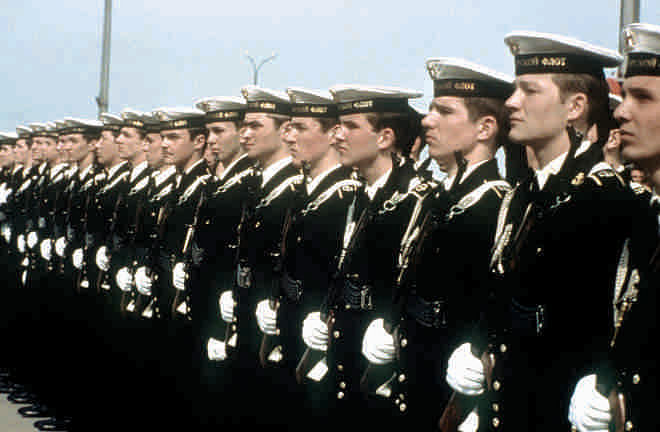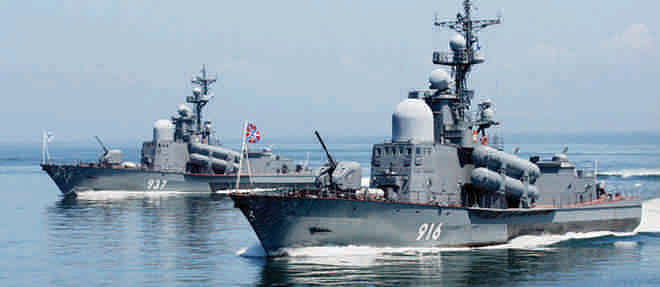IN THE SPIRIT OF BROTHERLY LOVE

The month of April this year, marked the forty-second anniversary of the Soviet mine clearing and salvage operations at the Port of Chittagong. Like previous years, this significant episode in the history of our nation has received little, if any, mention in the print and electronic media.
During our War of Independence, the rapacious and marauding Pakistan Army and their collaborators, murdered millions, inflicted immense suffering on the innocent people and caused colossal destruction. Infrastructure, particularly, bridges, airports and seaports, were very badly damaged. Chittagong Port, the main seaport of the country, as well as the smaller Chalna /Mongla Port, were completed devastated & put out of commission. Therefore, one of the top priorities of the infant Bangladesh Government, under the inspiring leadership of the Father of the Nation Bangabandhu Sheikh Mujibur Rahman, was to make the two seaports functioning in the shortest possible time, which was crucial for the massive reconstruction and rehabilitation of the war ravaged country. The Government appealed to Bangladesh's friends for assistance. The United Nations and the USSR responded positively. However, the U.N informed Bangladesh that it needed some time to mobilise the required resources and select the competent company for these operations. On the other hand, the offer of assistance from the U.S.S.R (Soviet Union) was immediate and unconditional. The “formal” offer was made during the official visit of Prime Minister Bangabandhu Sheikh Mujibur Rahman to the Soviet Union in the first week of March, 1972.

The Soviet Government was quick to act on their offer of assistance. A nine -member delegation arrived in Dhaka on March, 21, to conduct negotiations with the Bangladesh side. Just 34 hours later, the two sides signed the “Agreement on Rendering Free Aid to Bangladesh in Rehabilitation of Normal Conditions of Navigation in Seaports of the Country” (March, 21, 1972) In accordance with the Agreement, the Soviet Government agreed to mobilise and dispatch, a “Rescue Expedition” as it was called by the Soviets, to make the Chittagong and Chalna /Mongla ports operational, free of charge, at the shortest possible time.
On April, 02, 1972, the advance team of 100 seamen, led by Rear Admiral Sergey Pavlovich Zuenko, a veteran of 36 years in the Soviet Navy, as Commander of the “Rescue Expedition”, arrived at Chittagong. He immediately went to work with the seamen and equipment at his disposal. By May 4, the main flotilla of 22 vessels and 700 seamen, from the Soviet “Pacific Fleet” were already at Chittagong Port.
The 800- member Soviet team, under the able leadership of Rear Admiral Zuenko, faced a very formidable and daunting task. The Port was very badly damaged. At least 30 ships, of all description, had sunk in the Port area and outer anchorage (mostly from heavy Indian air strikes). At the close of the War, the Pakistani occupation forces had placed numerous mines to render the Port useless to Bangladesh.
Mine clearing / sweeping is a complicated and potentially dangerous operation. Salvaging sunken ships are difficult under “normal” conditions. But, in the case of Chittagong Port, these procedures proved to be even more difficult and dangerous. Underwater visibility was almost zero, in the muddy, polluted water of Karnaphuli River. Strong currents in the fast flowing River prevented the divers from going down more than four times a day, and each time for no longer than 40 / 45 minutes. The Soviet seamen had to endure difficult climatic and living conditions. The salvage team could not employ the effective and efficient “underwater blasting” method, of sunken wrecks, as the Karnaphuli River was too narrow and blasting could endanger vessels within the Port. Moreover, considerable fish and marine resources would be destroyed as well. Therefore, they had to employ the older “sunken pontoons” method. Pontoons would be attached to the ship wrecks, which would then be floated with compressed air, thus bringing the wrecks to the surface. This method turned out to be extremely time consuming, labour intensive and difficult.

Mine sweeping and salvage operations began in early April 1972. In the first week of July, just about three months from date of operations, the Soviets declared the Port safe for navigation. Although there were still many sunken ships and mines, the Soviet team were able to clear a “navigational channel” for ships to enter and depart from the Port, thus making it operational again. The monthly turn-over of merchandise jumped to more than 500,000 tons. During July- December period, more sunken ships and mines were removed. As a result, the Port was able to handle an average of 406,000 tons per month. During the same period, 569 ships called at the Port, or about 71 per month. From August, 15, very large ships were permitted to navigate the River. Mine sweeping/ clearing operation was fully completed by October, 21, 1972.
By December, 1973, the Soviet team had accomplished their task. However, the Bangladesh Government requested the Soviet Union to extend the stay of the team. In the “Protocol” of December, 20, the Soviets agreed to salvage six more ships and undertake essential reconstruction of the Port by June, 30, 1974.
For 27 months of difficult and arduous work, the salvage team lifted and towed away to ship breaking docks, 26 damaged and sunken ships with more than 100 thousand ton overall displacement; lifted from the sea-bottom 1900 ton of metal scrap and cleared mines / obstructions from 1002 sq.miles of Port area. The salvage and mine sweeping operations were completed by mid-June, 1974. Most of the seamen left Chittagong during late-June, for Vladivostok, thus concluding the successful “Soviet Rescue Operations” in Bangladesh.
At a well attended farewell party, Bangabandhu paid rich tributes to the members of the Rescue Expedition. In his speech, he said: “I thank all members of the Soviet Expedition for the work done. Our young Republic would find itself in extremely difficult position if the Soviet seamen did not subvene us. I thank all Soviet seamen for huge work on restoration of the Chittagong Port, which was conducted despite difficult climatic and living conditions……………” One senior sailor, Yuri Viktorovich Redkin, at floating workshop PI-156, however, did not return home. On July, 13, 1973, he “died on duty”. He was buried in Chittagong, on the Petenga Cape. The place of his burial, “Redkin Point”, is named after him. It is now situated in the premises of Bangladesh Naval Academy. The management and cadets of the Academy take care of the grave and it is open to visitors.
Postscript: Bangladesh Government honoured “Late Rear Admiral Sergey Pavlovich Zuenko and his team” (“Rescue Expedition”) when Prime Minister Sheikh Hasina presented the “Friends of Liberation War Honour” to their representatives in a solemn ceremony in March,27, 2013. (A total of 338 foreign friends and organizations were honoured by Bangladesh Government)
The writer is a former secretary and ambassador.

 For all latest news, follow The Daily Star's Google News channel.
For all latest news, follow The Daily Star's Google News channel. 



Comments